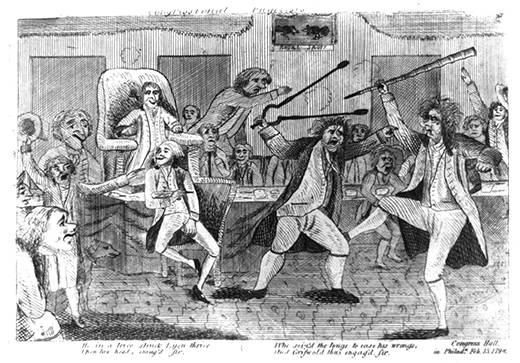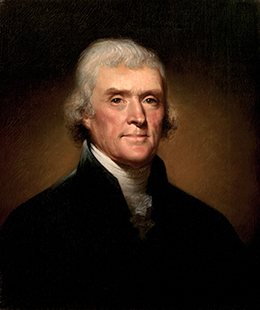| << Chapter < Page | Chapter >> Page > |

The Alien and Sedition Acts raised constitutional questions about the freedom of the press provided under the First Amendment. Democratic-Republicans argued that the acts were evidence of the Federalists’ intent to squash individual liberties and, by enlarging the powers of the national government, crush states’ rights. Jefferson and Madison mobilized the response to the acts in the form of statements known as the Virginia and Kentucky Resolutions, which argued that the acts were illegal and unconstitutional. The resolutions introduced the idea of nullification, the right of states to nullify acts of Congress, and advanced the argument of states’ rights. The resolutions failed to rally support in other states, however. Indeed, most other states rejected them, citing the necessity of a strong national government.
The Quasi-War with France came to an end in 1800, when President Adams was able to secure the Treaty of Mortefontaine. His willingness to open talks with France divided the Federalist Party, but the treaty reopened trade between the two countries and ended the French practice of taking American ships on the high seas.
The Revolution of 1800 refers to the first transfer of power from one party to another in American history, when the presidency passed to Democratic-Republican Thomas Jefferson ( [link] ) in the 1800 election. The peaceful transition calmed contemporary fears about possible violent reactions to a new party’s taking the reins of government. The passing of political power from one political party to another without bloodshed also set an important precedent.

The election did prove even more divisive than the 1796 election, however, as both the Federalist and Democratic-Republican Parties waged a mudslinging campaign unlike any seen before. Because the Federalists were badly divided, the Democratic-Republicans gained political ground. Alexander Hamilton, who disagreed with President Adams’s approach to France, wrote a lengthy letter, meant for people within his party, attacking his fellow Federalist’s character and judgment and ridiculing his handling of foreign affairs. Democratic-Republicans got hold of and happily reprinted the letter.
Jefferson viewed participatory democracy as a positive force for the republic, a direct departure from Federalist views. His version of participatory democracy only extended, however, to the white yeoman farmers in whom Jefferson placed great trust. While Federalist statesmen, like the architects of the 1787 federal constitution, feared a pure democracy, Jefferson was far more optimistic that the common American farmer could be trusted to make good decisions. He believed in majority rule, that is, that the majority of yeoman should have the power to make decisions binding upon the whole. Jefferson had cheered the French Revolution, even when the French republic instituted the Terror to ensure the monarchy would not return. By 1799, however, he had rejected the cause of France because of his opposition to Napoleon’s seizure of power and creation of a dictatorship.

Notification Switch
Would you like to follow the 'U.s. history' conversation and receive update notifications?